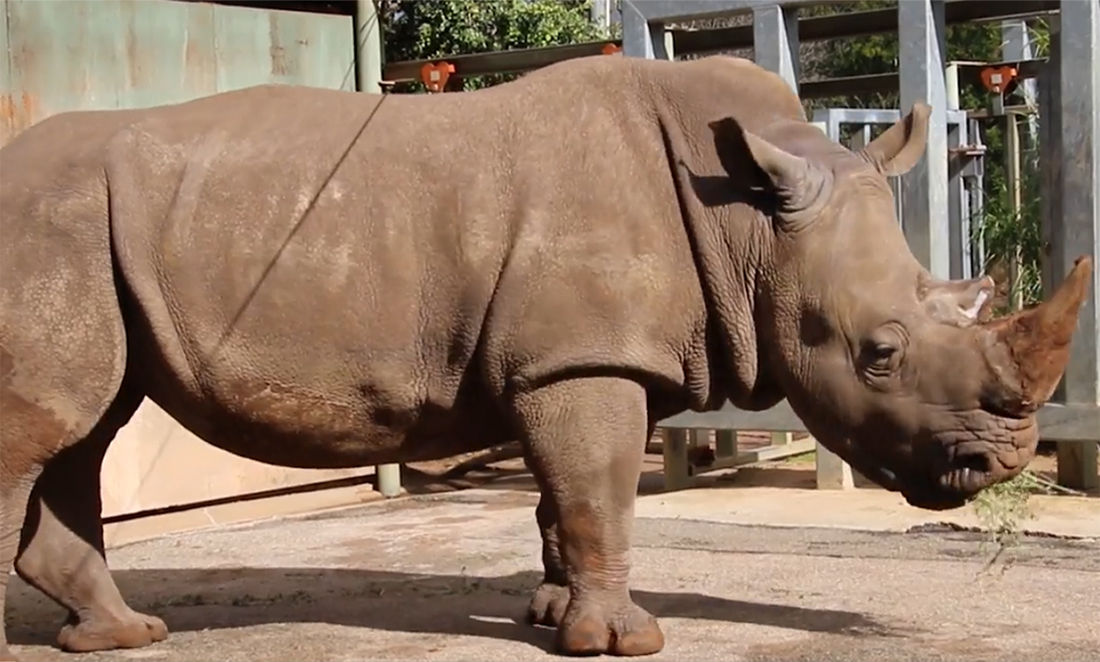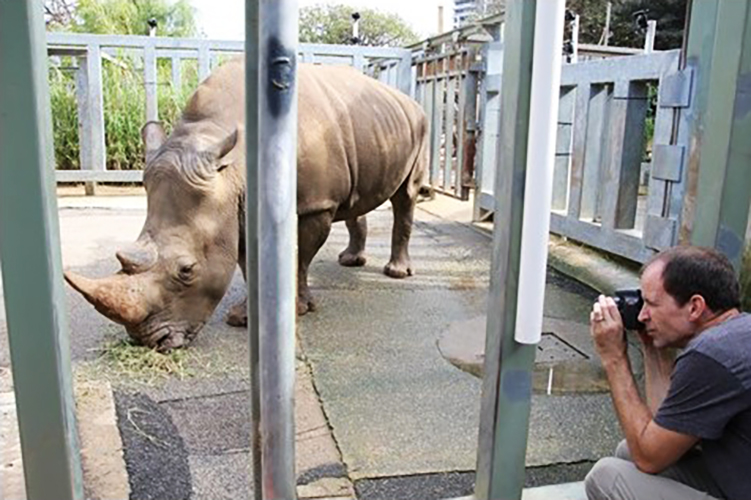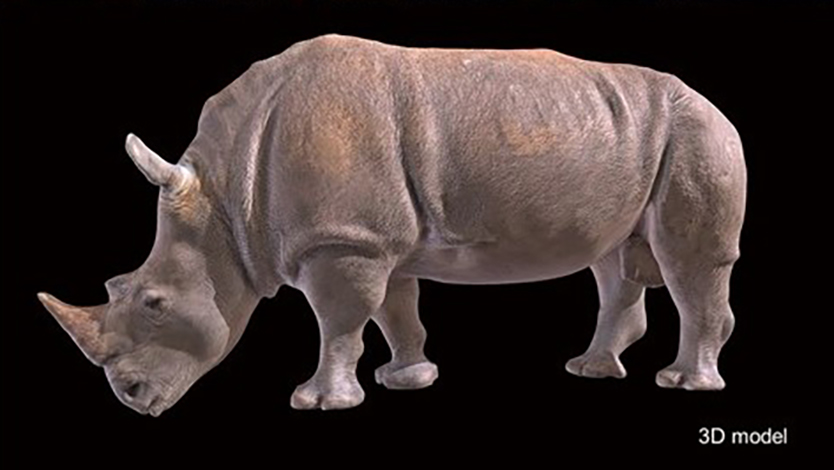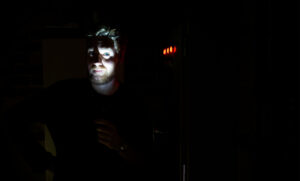Perth Zoo’s southern white rhino, Bakari, is used to modelling for a photo – whether that’s making friends with unexpected visitors in his enclosure or snuggling up for a photo with his biggest fans.
But this week, he’s made history. He’s become the world’s first accurate, three-dimensional digital model of his species.
Created by non-profit initiative, Digital Life Project, Baraki’s model is part of a project to build a ‘digital ark’ with interactive imagery of life on earth.
Based out of the University of Massachusetts Amherst, the Digital Life team is is using technology to give wildlife a helping hand, creating incredible 3D renderings of animals for conservationist and educational use.
On the catwalk, yeah
Previous creatures who’ve had their models added to the project include sea turtles, sharks, frogs, reptiles and plants. But weighing in at more than 2 tonnes, Bakari is the biggest subject Digital Life has worked with.
Professor Duncan Irschick, Director of the Digital Life Project said Bakari was a memorable subject.
“Bakari was great, very well behaved, a very mellow rhino and one of the best subjects we have had,” Duncan says. “We worked with the Perth Zoo team to ensure we photographed Bakari in a non-invasive way, consistent to how he acts daily.”
“So he was able to feed and move around as he normally would.”
Turn to the left, Work
It took Duncan less than 2 hours to capture Bakari’s 360° image.
Most of that time was for the set-up: 20 cameras arranged around his outdoor rhino night quarters. Each camera was connected to a wireless switch, allowing them to all take a photo at exactly the same time from every angle.
Perth Zoo keepers assisted by taking close-up photos of hard to reach areas such as under Bakari’s belly and feet.
Then it was back to the United States where talented CGI artist Jer Bot was able to accurately recreate Bakari from the images using the open-source software Blender.
“One of the projects we are looking at is to use these models to come up with better ways to estimate body mass and body condition of animals in the wild in a non-invasive way,” Duncan said.
“The completed model can also be used in virtual and augmented reality experiences, for 3D printing, to create moulds, statues or casts.”
“It’s very special to photo-capture an animal like a rhino because they are a persecuted species. Their numbers are declining as they are still hunted for their horns and other body parts.”
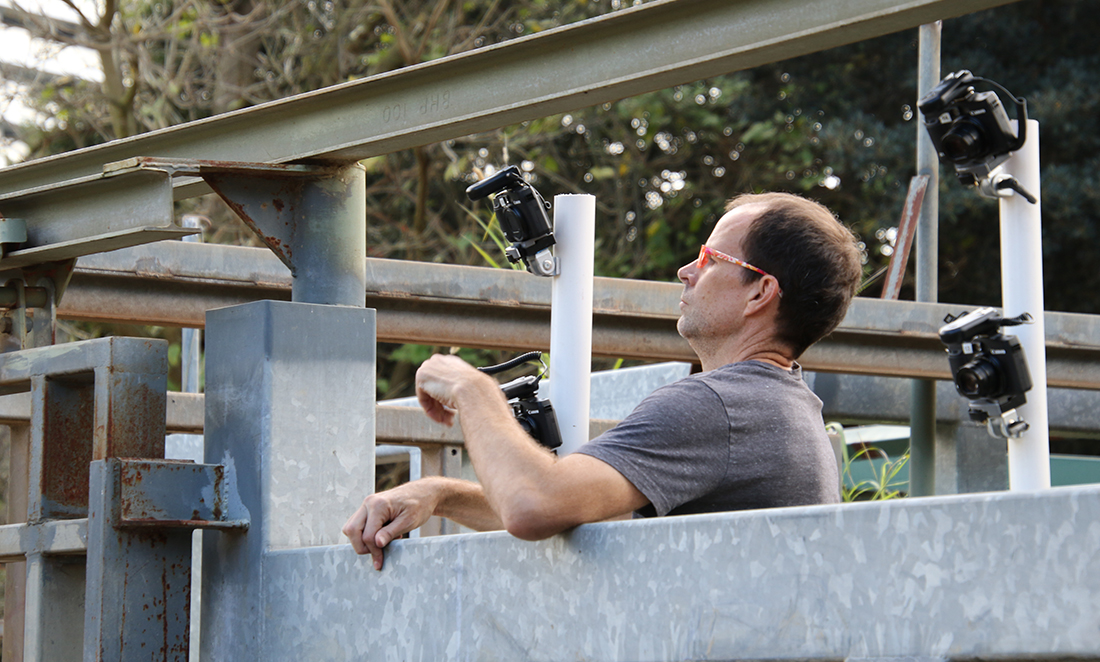
State of the Rhino
There are five rhinoceros species in the world and all are threatened with extinction. Just last year, the world’s last northern white rhino, Sudan, passed away at age 45 – an event described by Sir David Attenborough as a “catastrophe”.
The rhino’s biggest predator is humans – believing that rhino horn contains curative properties. One of the aims of World Rhino Day, held each year on 22 September, is to debunk this to reduce the demand for rhinoceros horn.
“Wild rhinos are killed for their horns to be sold on the black market, used as dagger handles, ornaments and potions,” said Perth Zoo Curator of Operations, John Lemon.
“The horn of a rhinoceros is made from keratin, the same ingredient as our hair and fingernails.
“Despite this there are sadly people paying good money for what could essentially be made from toe-nail clippings.”
Southern White Rhinos like Bakari – and his father, Memphis, who also lives at Perth Zoo – were thought to be extinct about 100 years ago. It’s thanks to the efforts of zoos and conservationists that the population numbers have been bolstered to about 20,000 worldwide.
Baby, it’s in your nature
Nothing can beat seeing Bakari in real life, but thanks to Digital Life Project he will continue to be an ambassador for his wild cousins beyond his years.
For Duncan, the process his team are refining has great potential to build a valuable resource for educators, scientists and conservationists alike.
“We hope our concept, using 21st century technology, will increase awareness for these animals, their beauty and fragility.”


